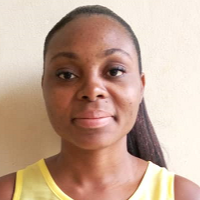International Journal of Information Technology and Computer Science (IJITCS)
IJITCS Vol. 11, No. 11, 8 Nov. 2019
Cover page and Table of Contents: PDF (size: 393KB)
A Web-Based Skin Disease Diagnosis Using Convolutional Neural Networks
Full Text (PDF, 393KB), PP.54-60
Views: 0 Downloads: 0
Author(s)
Index Terms
Skin disease detection, Expert-system, Convolutional neural network, Tensorflow, Atopic dermatitis, Acne vulgaris, Scabies
Abstract
Skin diseases are reported to be the most common disease in humans among all age groups and a significant root of infection in sub-Saharan Africa. The diagnosis of skin diseases using conventional approaches involves several tests. Due to this, the diagnosis process is seen to be intensely laborious, time-consuming and requires an extensive understanding of the domain. The enhancement of computer vision through artificial intelligence has led to a more straightforward and quicker way of detecting patterns in images, which can be harnessed to equip diagnosis process. Despite the breakthrough in technology, the dermatological process in Ghana is yet to be automated, making the diagnosis process complicated and time-consuming. Hence, this study sought to propose a web-based skin disease detection system named medilab-plus using a convolutional neural network classifier built upon the Tensorflow framework for detecting (atopic dermatitis, acne vulgaris, and scabies) skin diseases. Experimental results of the proposed system exhibited classification accuracy of 88% for atopic dermatitis, 85% for acne vulgaris, and 84.7% for scabies. Again, the computational time (0.0001 seconds) of the proposed system implies that any dermatologist, who decides to implement this study, can attend to not less than 1,440 patients a day compared to the manual diagnosis process. It is estimated that the proposed system will enhance accuracy and offer fasting diagnosis results than the traditional method, which makes this system a trustworthy and resourceful for dermatological disease detection. Additionally, the system can serve as a realtime learning platform for students studying dermatology in medical schools in Ghana.
Cite This Paper
Samuel Akyeramfo-Sam, Acheampong Addo Philip, Derrick Yeboah, Nancy Candylove Nartey, Isaac Kofi Nti, "A Web-Based Skin Disease Diagnosis Using Convolutional Neural Networks", International Journal of Information Technology and Computer Science(IJITCS), Vol.11, No.11, pp.54-60, 2019. DOI:10.5815/ijitcs.2019.11.06
Reference
[1]N. Yadav, V.K. Narang, S. Utpal, Skin Diseases Detection Models using Image Processing : A Survey, Int. J. Comput. Appl. 137 (2016) 34–39.
[2]J. Rathod, V. Waghmode, A. Sodha, Diagnosis of skin diseases using Convolutional Neural Networks, in: 2nd Int. Conf. Electron. Commun. Aerosp. Technol. (ICECA 2018), IEEE Xplore, 2018: pp. 1048–1051. doi:10.1109/ICECA.2018.8474593.
[3]A. Hogewoning, A. Amoah, J.N.B. Bavinck, A. Boakye, D.; Yazdanbakhsh, M. Adegnika, S. De Smedt, Y. Fonteyne, R. Willemze, A. Lavrijsen, Skin diseases among school children in Ghana, Gabon, and Rwanda, 2019.
[4]B.E. Rosenbaum, R. Klein, P.G. Hagan, M. Seadey, N.L. Quarcoo, R. Hoffmann, M. Robinson, M. Lartey, M.C. Leger, Dermatology in Ghana: a retrospective review of skin disease at the Korle Bu Teaching Hospital Dermatology Clinic, Pan Afr. Med. J. 8688 (2017) 1–9. doi:10.11604/pamj.2017.26.125.10954.
[5]N. Codella, J. Cai, M. Abedini, R. Garnavi, A. Halpern, J.R. Smith, Deep Learning, Sparse Coding, and SVM for Melanoma Recognition in Dermoscopy Images, in: L. Zhou, L. Wang, Q. Wang, Y. Shi (Eds.), Mach. Learn. Med. Imaging, Springer International Publishing, Cham, 2015: pp. 118–126.
[6]A. Esteva, B. Kuprel, R.A. Novoa, J. Ko, S.M. Swetter, H.M. Blau, S. Thrun, Dermatologist-level classification of skin cancer with deep neural networks, Nature. 542 (2017) 115.
[7]F. Jiang, Y. Jiang, H. Zhi, Y. Dong, H. Li, S. Ma, Y. Wang, Q. Dong, H. Shen, Y. Wang, Artificial intelligence in healthcare : past, present and future, Stroke Vasc. Neurol. (2017). doi:10.1136/svn-2017-000101.
[8]A.A.L.C. Amarathunga, E.P.W.C. Ellawala, G.N. Abeysekara, C.R.J. Amalraj, Expert System For Diagnosis Of Skin Diseases, Int. J. Sci. Technol. Res. 4 (2015) 174–178.
[9]M.S. Poornima, K. Shailaja, Detection of Skin Cancer Using SVM, Int. Res. J. Eng. Technol. 04 (2017).
[10]M.R.A.A.A.A. Edrees, Remote Skin Diseases Diagnosis System Using Machine Learning Techniques, University of Khartoum, 2017.
[11]Worldometers, World Population, Ghana Popul. (2019). https://www.worldometers.info/world-population/ghana-population/.
[12]A. Hartmann, Back to the roots – dermatology in ancient Egyptian medicine, J. Ger. Soc. Demotology. (2016) 389–396. doi:10.1111/ddg.12947.
[13]G. Rosen, A history of public health, JHU Press, 2015.
[14]I. Kim, J.H. Shim, J. Yang, Face detection, 2003.
[15]SkinVision, Skin cancer: Now the most common type of cancer, (2011).
[16]Lubax, Introducing Lūbax, a smartphone-based clinical reference to identify skin lesions (2015). http://lubax.com/.
[17]I.K. Nti, A.F. Adekoya, B.A. Weyori, A systematic review of fundamental and technical analysis of stock market predictions, Artif. Intell. Rev. (2019). doi:10.1007/s10462-019-09754-z.
[18]I.K. Nti, A.F. Adekoya, B.A. Weyori, Random Forest Based Feature Selection of Macroeconomic Variables for Stock Market Prediction, Am. J. Appl. Sci. 16 (2019) 200–212. doi:10.3844/ajassp.2019.200.212.
[19]D. Faggella, What is Machine Learning?, Tech Emerg. (2018). https://www.techemergence.com/what-is-machine-learning/ (accessed October 8, 2018).
[20]V.S. Pagolu, B. Majhi, N.R.C. Kamal, P. Ganapati, Sentiment Analysis of Twitter Data for Predicting Stock Market Movements, in: Int. Conf. Signal Process. Commun. Power Embed. Syst. (SCOPES)-2016 Sentim., 2016: pp. 1345–1350.
[21]S. Shen, J. Haomiao, Z. Tongda, Stock Market Forecasting Using Machine Learning Algorithms, CA, 2012.
[22]M. Fatima, M. Pasha, Survey of Machine Learning Algorithms for Disease Diagnostic, J. Intell. Learn. Syst. Appl. 9 (2017) 1–16. doi:10.4236/jilsa.2017.91001.
[23]I.K. Nti, G. Eric, Y.S. Jonas, Detection of Plant Leaf Disease Employing Image Processing and Gaussian Smoothing Approach, Int. J. Comput. Appl. 162 (2017) 975–8887.
[24]B. Sasan, A. Azadeh, S. Ortobelli, Fusion of multiple diverse predictors in stock market, Inf. Fusion. 36 (2017) 90–102. doi:10.1016/j.inffus.2016.11.006.
[25]D. Bogdanova, C. Santos, L. Barbosa, B. Zadrozny, Detecting Semantically Equivalent Questions in Online User Forums, Proc. 19th Conf. Comput. Lang. Learn. (2015) 123–131.
[26]S. Poria, E. Cambria, A. Gelbukh, Aspect extraction for opinion mining with a deep convolutional neural network, Knowledge-Based Syst. 108 (2016) 42–49. doi:10.1016/j.knosys.2016.06.009.
[27]T. Liu, S. Fang, Y. Zhao, P. Wang, J. Zhang, Implementation of Training Convolutional, ArXiv:1506.01195 [Cs.CV]. 1–10 (2015).




